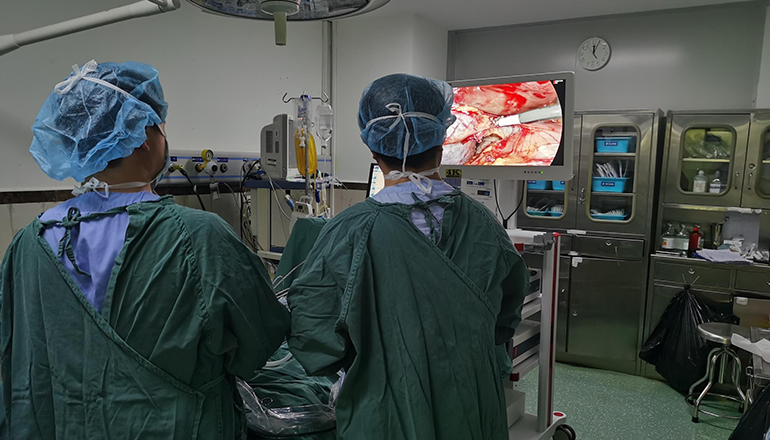- Shanghai, China
- [email protected]
- +86-21-58189111
Right posterior hepatectomy is a surgical procedure to remove the right posterior portion of the liver, including segments 6 and 7. Laparoscopic right posterior hepatectomy (LRPH) is a minimally invasive surgical technique that involves using a laparoscope to visualize and dissect the liver, and is associated with less pain, shorter hospital stay, and faster recovery compared to open surgery. Here is a step-by-step guide on how to perform LRPH:
Preoperative evaluation:
Before the operation, a thorough evaluation of the patient is necessary, including a detailed medical history, physical examination, blood tests, and imaging studies such as MRI and CT scans to assess the extent of the tumor and its relationship to the liver and surrounding structures.
Surgical technique:
The procedure is performed under general anesthesia, and the patient is placed in a modified lithotomy position with the legs apart. A laparoscope is introduced through a small incision in the umbilicus, and additional ports are placed in the upper abdomen to accommodate other surgical instruments. Carbon dioxide gas is then insufflated into the abdomen to create a working space.
The first step is to mobilize the liver and expose the hepatic hilum. This involves dividing the ligamentum teres and falciform ligament, and retracting the left lobe of the liver to expose the right posterior segment. The Glissonian pedicle to segment 6 and 7 is then dissected and divided using a stapler, taking care to avoid injury to the surrounding structures such as the right hepatic vein and inferior vena cava.

Next, the liver parenchyma is dissected using a combination of electrocautery and ultrasonic shears. The liver is divided along the plane between segments 6 and 7 and the right hepatic vein, using a stapler to control bleeding. The liver specimen is then removed through a small incision in the upper abdomen.
After the specimen is removed, the cut surface of the liver is inspected for hemostasis and bile leakage, and the remaining liver is mobilized and repositioned to cover the raw surface. The bile duct is inspected and any leaks are repaired using sutures or clips. The remaining ports are then removed, and the abdominal incisions are closed.
Postoperative management:
Patients are typically kept in the hospital for several days following surgery to monitor their recovery. Pain medication, antibiotics, and anti-nausea medications are administered as needed. Patients are allowed to resume eating and drinking once bowel function has returned. A follow-up appointment with the surgeon is scheduled within several weeks after the surgery.
Conclusion:
LRPH is a complex and technically challenging procedure that requires expertise in both laparoscopic and hepatobiliary surgery. However, in experienced hands, this approach has been shown to be safe and effective, with a shorter hospital stay, less postoperative pain, and faster recovery compared to traditional open surgery. Careful patient selection and meticulous surgical technique are essential to achieve optimal outcomes. Therefore, it is important to seek out an experienced surgical team who can provide the best possible care for patients undergoing LRPH.
Complications:
As with any surgical procedure, there are potential complications associated with LRPH. These may include bleeding, bile leak, infection, and injury to surrounding structures such as the hepatic vein or bile ducts. However, these risks are generally low and can be minimized with careful patient selection and surgical technique. In addition, most patients are able to return to their normal activities within a few weeks after surgery.
Long-term outcomes:
LRPH has been shown to have comparable long-term outcomes to open surgery in terms of overall survival, disease-free survival, and recurrence rates. However, long-term follow-up studies are still ongoing, and more data is needed to fully evaluate the efficacy of this approach.
In conclusion, LRPH is a minimally invasive surgical technique that can be used to safely and effectively remove the right posterior portion of the liver. It offers several benefits over open surgery, including less pain, shorter hospital stay, and faster recovery. However, careful patient selection and meticulous surgical technique are essential to achieve optimal outcomes. Therefore, it is important to seek out an experienced surgical team who can provide the best possible care for patients undergoing LRPH.
Leave a Comments